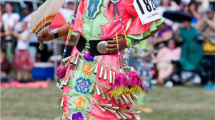Abstract
The invention of antipsychotic drugs has greatly promoted the treatment of mental diseases, and available medical treatments do not sufficiently address all symptoms and many can cause additional side effects. Thus, rehabilitation therapy plays a significant role and serves as a supplementary method in alleviating symptoms, enabling patients to readapt to society, totally restoring their social functions, and keeping them fit as well. Dance movement therapy (DMT), unlike traditional psychotherapy, uses nonverbal body and mind integration method to further individual’s emotional, cognitive, physical, and social integration, which has become an increasingly recognized and used treatment in mental disorder. DMT may improve psychological and emotional health by enhancing self-awareness and self-control and improving interpersonal function. However, empirical evidence is sparse due to various reasons. Rigorous clinical researches in real-world with patient-based meaningful outcomes are required in the future. Moreover, it is important for DMT therapists to constantly learn “rehabilitation language” and update the current mental health methods, so that they can better take advantage of DMT in rehabilitation treatment. Totally, the rehabilitation of patients with mental disorders takes a heavy burden and embarks on a long road. DMT may be an alternative for rehabilitating people with mental disorders.
Access this chapter
Tax calculation will be finalised at checkout
Purchases are for personal use only
Similar content being viewed by others
References
American Dance Therapy Association. What is dance/movement therapy? 2020. https://adta.org/clinical-info-sheets/.
Friedrich MJ. Depression is the leading cause of disability around the world. JAMA. 2017;317(15):1517.
Yang CY, Lo SC, Peng YC. Prevalence and predictors of metabolic syndrome in people with schizophrenia in inpatient rehabilitation wards. Biol Res Nurs. 2016;18(5):558–66.
Vancampfort D, Probst M, Scheewe T, De Herdt A, Sweers K, Knapen J, et al. Relationships between physical fitness, physical activity, smoking and metabolic and mental health parameters in people with schizophrenia. Psychiatry Res. 2013;207(1–2):25–32.
Sugawara N, Yasui-Furukori N, Yamazaki M, Shimoda K, Mori T, Sugai T, et al. Attitudes toward metabolic adverse events among patients with schizophrenia in Japan. Neuropsychiatr Dis Treat. 2016;12:427–36.
GBD 2017 Disease and Injury Incidence and Prevalence Collaborators. Global, regional, and national incidence, prevalence, and years lived with disability for 354 diseases and injuries for 195 countries and territories, 1990-2017: a systematic analysis for the Global Burden of Disease Study 2017. Lancet. 2018;392(10159):1789–858.
Mirabella G. Is art therapy a reliable tool for rehabilitating people suffering from brain/mental diseases? J Altern Complement Med. 2015;21(4):196–9.
Priebe S, Savill M, Wykes T, Bentall R, Lauber C, Reininghaus U, et al. Clinical effectiveness and cost-effectiveness of body psychotherapy in the treatment of negative symptoms of schizophrenia: a multicentre randomised controlled trial. Health Technol Assess. 2016;20(11):vii–xxiii, 1–100.
Levine B, Land HM. A meta-synthesis of qualitative findings about dance/movement therapy for individuals with trauma. Qual Health Res. 2016;26(3):330–44.
Author information
Authors and Affiliations
Editor information
Editors and Affiliations
Rights and permissions
Copyright information
© 2021 Springer Nature Switzerland AG
About this chapter
Cite this chapter
Ren, J., Ye, C., Zhang, C. (2021). Dance Movement Therapy as an Alternative for Rehabilitating People with Mental Disorders. In: Volpe, U. (eds) Arts Therapies in Psychiatric Rehabilitation. Springer, Cham. https://doi.org/10.1007/978-3-030-76208-7_13
Download citation
DOI: https://doi.org/10.1007/978-3-030-76208-7_13
Published:
Publisher Name: Springer, Cham
Print ISBN: 978-3-030-76207-0
Online ISBN: 978-3-030-76208-7
eBook Packages: MedicineMedicine (R0)




